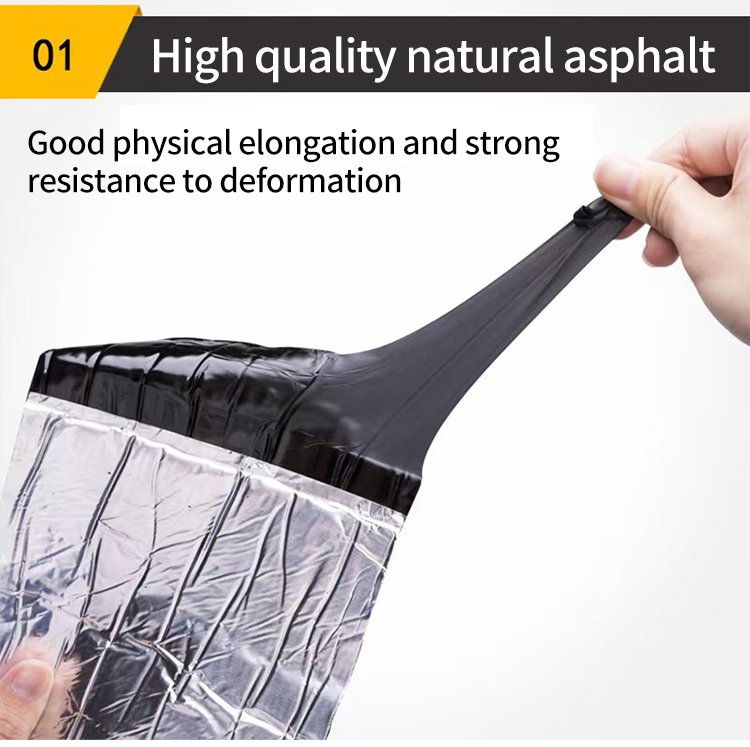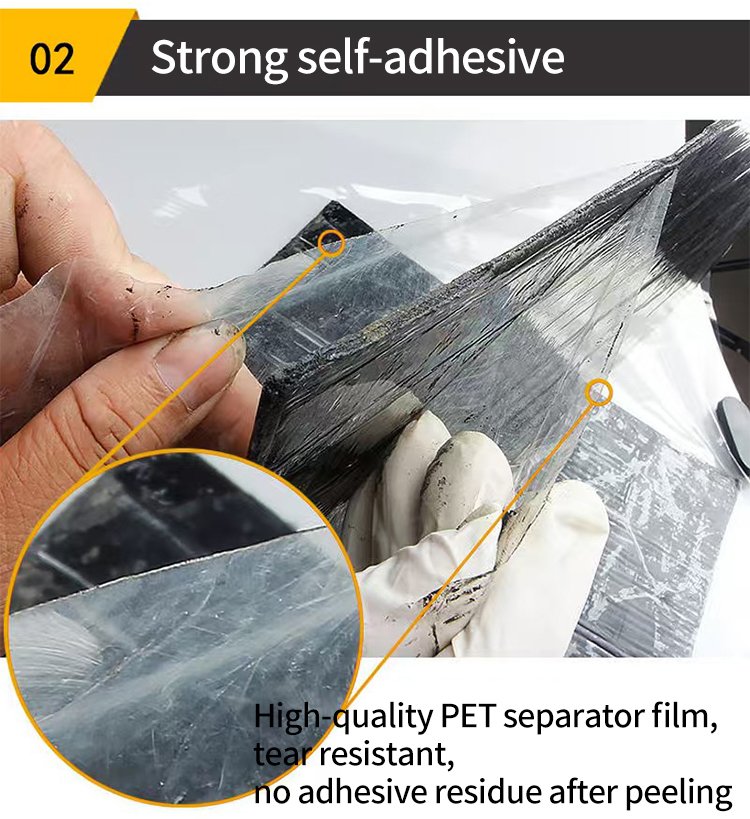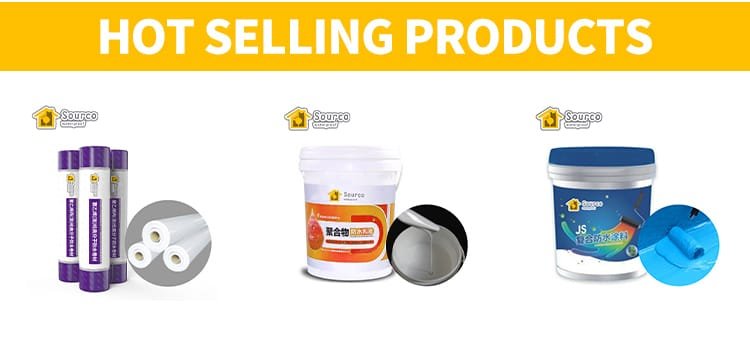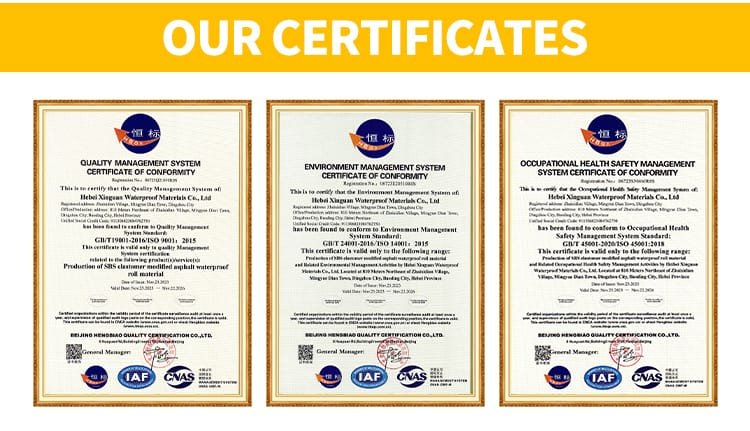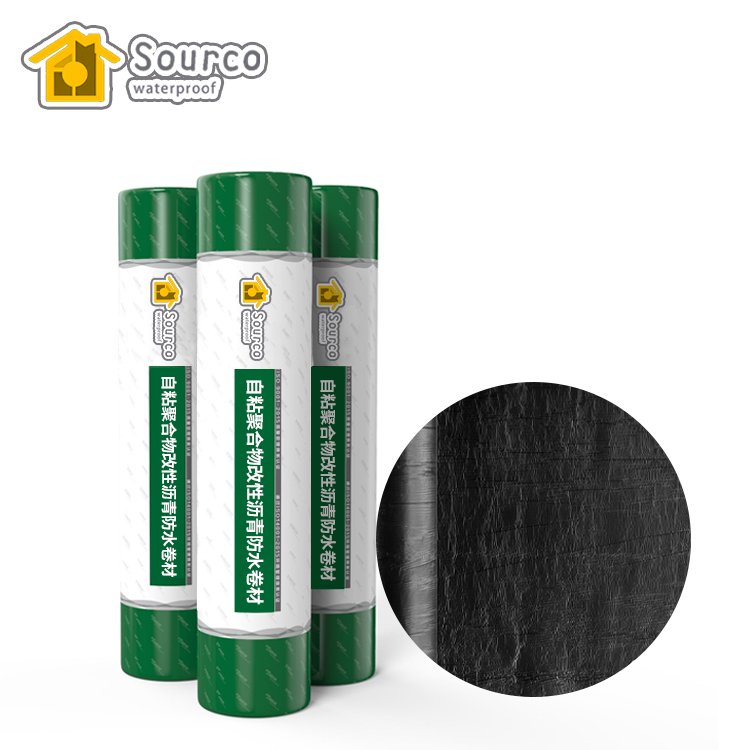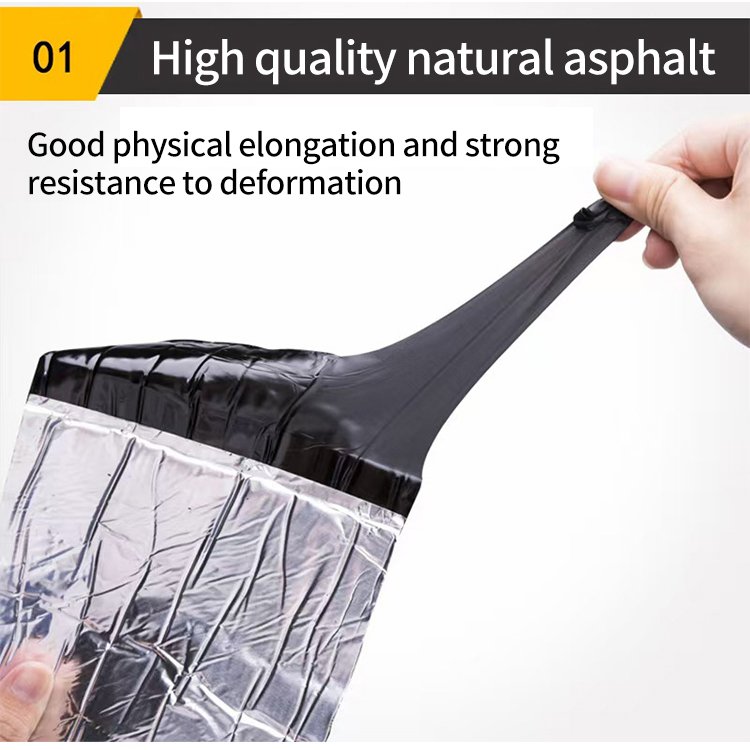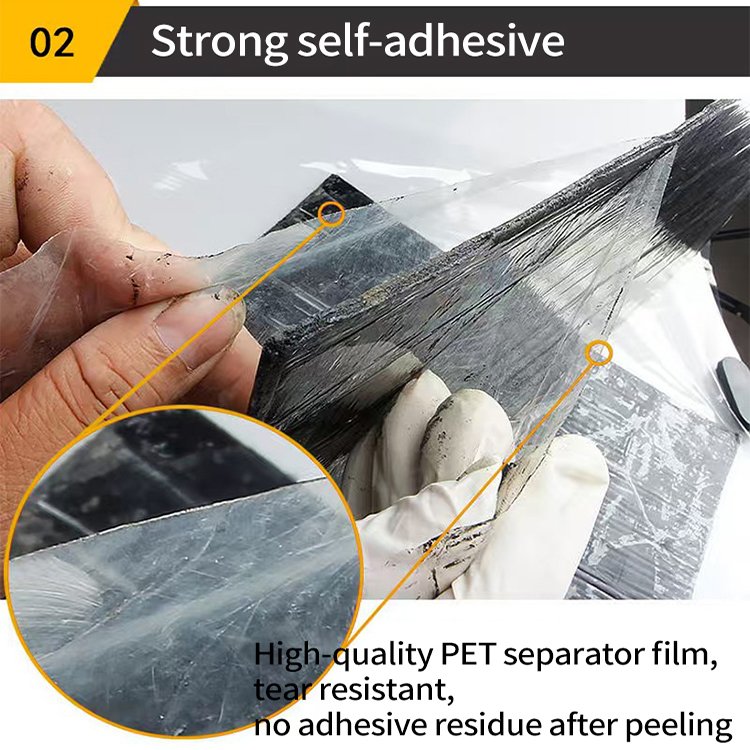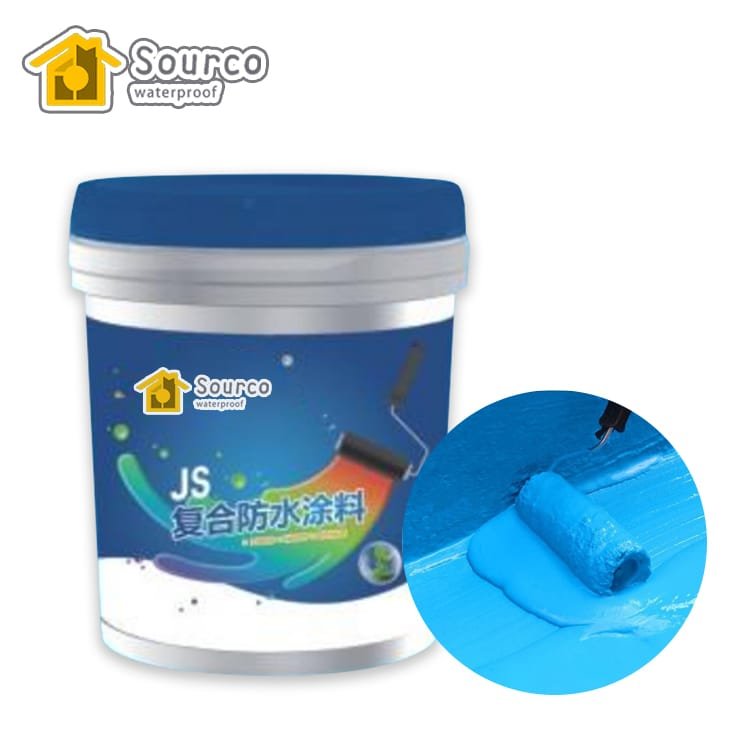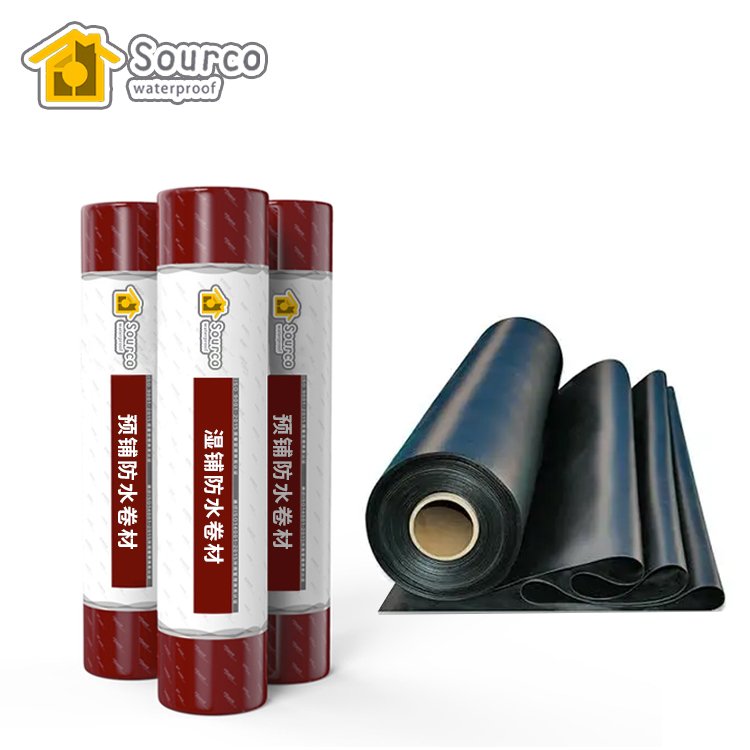
SELF-ADHESIVE POLYMER MODIFIED BITUMEN WATERPROOFING MEMBRANE
Self-adhesive polymer-modified bitumen(N)is a self-adhesive waterproofing membrane made from synthetic rubber (such as SBS), high-quality road asphalt, tackifier. It uses polyester film (PET), polyethylene film (PE), aluminum foil, or silicone-coated release film as the upper surface material, with the lower surface coated with silicone release film as an anti-adhesion layer. This type of membrane does not have a base layer.
Self-adhesive polymer-modified bitumen polyester-based waterproofing membrane (PY) uses high-quality polyester felt as the base layer and tackified polymer-modified bitumen as the coating material. The upper surface is covered with polyethylene film, fine sand, shale, aluminum foil, or release film as the separation layer, while the lower surface is coated with silicone release film as the anti-adhesion layer.
SELF-ADHESIVE POLYMER MODIFIED BITUMEN WATERPROOFING MEMBRANE DESCRIPTION
BITUMEN WATERPROOFING WITH SELF-ADHESIVE POLYMER PRODUCT FEATURES
1.High elongation, high elasticity, and great tensile strength, with a distinctive “self-healing” function that can automatically repair punctures and cracks in the substrate up to 2mm.
2.Exceptional adhesion to the substrate, with a self-locking water feature that confines leakage caused by damage to the membrane within a localized area, effectively preventing water migration.
Superior bonding performance between membranes ensures tight, seamless overlaps for reliable waterproofing.
3.Excellent elongation properties, enabling the membrane to accommodate substrate deformation or cracking without tearing.
4.Safe and Eco-friendly, avoiding the fire hazards associated with torch-applied method and eliminating pollution.
Extremely simple to apply and easy to maintain.
5.Can be combined with compatible materials (e.g., coatings on the substrate) to form a multi-layered composite waterproofing system.
BITUMEN WATERPROOFING WITH SELF-ADHESIVE POLYMER PRODUCTS SPECIFICATIONS
The product is classified by composite base material into base-free (N type) and polyester-based (PY type):
N type: Further classified by the upper surface material into polyethylene film (PE), polyester film (PET), or double-sided self-adhesive without film (D).
PY type: Further classified by the upper surface material into polyethylene film (PE), fine sand (S), or double-sided self-adhesive without film (D)
 Membranes are categorized into Type I and Type II, with the 2.0mm PY base model available only in Type I. OEM production is available and can be customized based on customer requirements.
Membranes are categorized into Type I and Type II, with the 2.0mm PY base model available only in Type I. OEM production is available and can be customized based on customer requirements.
N-type membranes physical and mechanical properties Standard GB23441-2009
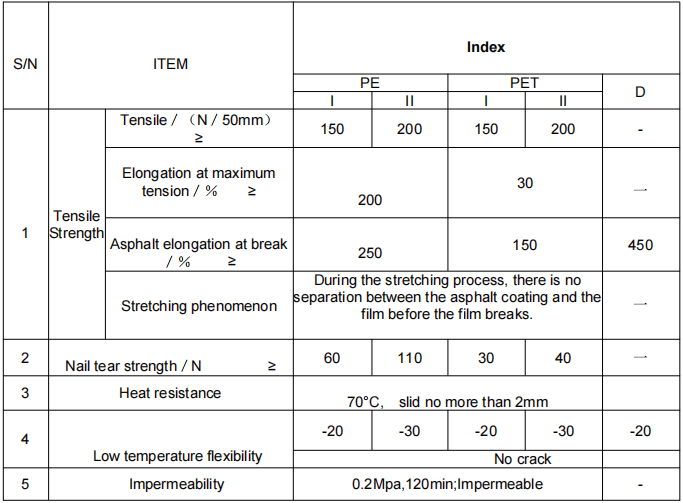
PY-type physical and mechanical properties Standard GB23441-2009

CONSTRUCTION TECHNOLOGY
Substrate Requirements: The waterproofing substrate must be solid, level, smooth, clean, dry, and free of dust, oil, or irregularities.
Primer Application: Thoroughly mix the primer and use a brush to apply it around the edges and corners of the substrate. Then, use a roller or spray for the application. Ensure uniform coverage, and after the primer dries, promptly lay the membrane.
Horizontal Application: First, mark a baseline on the substrate. Unroll the membrane and peel off the release paper while aligning it along the baseline. Ensure an overlap width of >100mm. After laying, use a rubber roller to firmly press the membrane into place.
Vertical Application: Start at the bottom and work upwards. Unroll the membrane while peeling off the release paper. Ensure an overlap width of >100mm, and press the membrane firmly into place immediately after laying.
Node Treatment: Add an additional layer at nodes per design specifications. The additional layer can use self-adhesive membranes or double-sided self-adhesive tape. The outer membrane seams at nodes should be sealed with specialized sealing materials.
Waterproof Protection: Follow the requirements of the Technical Specification for Roofing Engineering to construct the protective layer.
Adherence: Remove air from underneath the membrane to ensure tight bonding between the membrane and the substrate.
